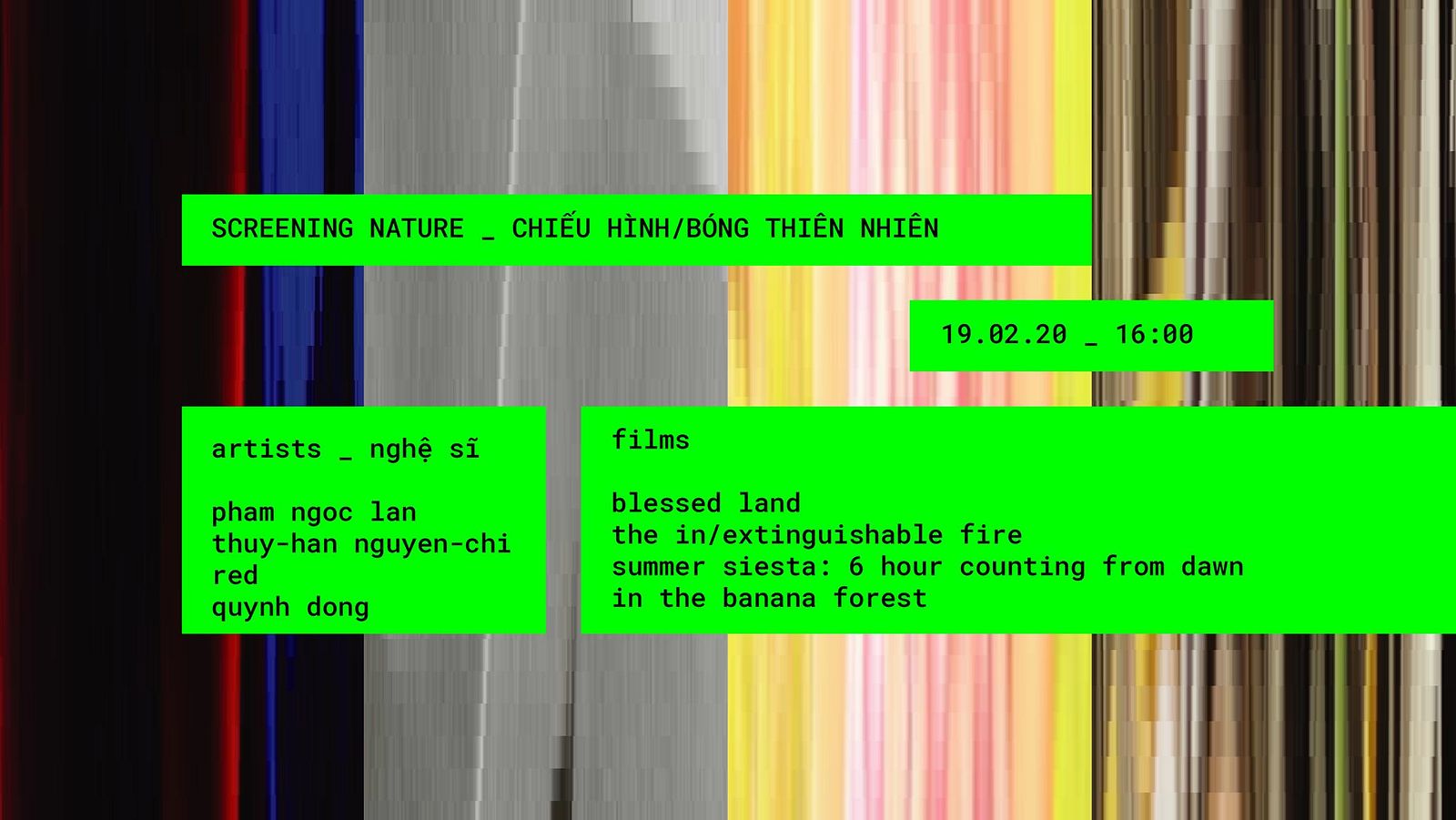A moving-image screening at Sàn Art
As part of IdeasCity Singapore, conceived and organized by NTU Centre for Contemporary Art Singapore and the New Museum, New York
“The Persian mystic Jalaluddin Rumi (1207-1273) wrote: ‘Enough talking. If we eat too much greenery,/we are going to smell like vegetables’.
Enough talking; and yet we go on talking and falling in love with green. We just can’t stop. And I can’t stop here, can I? With the media promotions of natural products and imagery that saturate life in modern societies, it is difficult to continue putting nature back into discourse, without contributing to further denature nature by partaking in the production of its so-called ‘crisis’—or what a European critic views as a form of ‘intellectual blackmail[ing]’ associated with that ‘epidemic of visibility menacing our entire culture’. As the end of the century approaches, discourses on and images of nature seem to have taken on a new lease of life. With their proliferation, the concept of nature has at once regained its full importance and become so destabilized as to raise anew the questions of its viability as a discursive category. In an attempt to introduce difference into practices that inform the theorizing of nature and to talk while not overeating greenery, a space is thus opened up here, in which reflections on nature necessarily shuttle between the arbitrary reality of the sign (word as word) and the multiple realities it speaks to or represents in the posthumanist landscapes of ‘denaturalized’ discourses.”
—Trinh T. Minh-Ha, “Nature’s r: A musical swoon”
In her late-90s essay that addresses humans’ serious obsession with, and alienation from, nature, Trinh T. Minh-Ha summoned us to listen to nature, to let its tonalities “sound through, unhampered.” In the tumultuous clamor of our contemporary moment, the call to listen to the subtleties of nature seems more impossible and urgent than ever. Borrowing Trinh T. Minh Ha’s diagnosis of our overconsumption of, and desensitization to, nature as a provocation to think, Sàn Art presents four moving-image works that contemplate four differently defamiliarized visions of our world. Facing these filmic landscapes that link worlds of the living and the dead, landscapes that shelter remembrances of things past as well as new visions of the present, we are invited to confront the reality of humans’ exploitation and subjugation of each other and of nature, to imagine new ways of filming and screening nature’s sacred climates, to search for nature’s receding music—the music John Cage described as “ecological… a “together-work” of water, air, sky, earth,” to listen to nature’s forgotten musical swoons, to the wavering, reeling moments of sundowns and moonrises, of falling, fading nights, of nights birthing new foliations of light, of light that mesmerically commands image- and film-makers to inscribe and ignite, again and again, its faltering glow, its shimmering shadows. Motions pictures made by mortals, after all, as a Vietnamese filmmaker writes, only dwell in these deathless modulations between “light and darkness, positive and negative, remembering and forgetting.”
—Nguyễn Hoàng Quyên, Sàn Art.
* The quotations (except for the final one) are taken from Trinh T. Minh-Ha’s essay, “Nature’s r: A musical swoon,” in FutureNatural: Nature, Science, Culture, ed. George Robertson et al. (London: Routledge, 1996), pp. 86–104.
* The last quotation cites the words of filmmaker Trương Minh Quý written for the day-long screening marathon Film to Forget at Sàn Art (September 2019).
-
ABOUT THE FILMS:
Pham Ngoc Lan
Blessed Land
19 min
2019
*
Thuy-Han Nguyen-Chi
The In/Extinguishable Fire
(from Syncrisis)
40 min
2019
*
Red
Summer siesta: 6 hour counting from dawn
13 min
2017
*
Quynh Dong
In the Banana Forest
45 min
2019
Wednesday, 19 Feb
4:00pm - 7:00pm
Sàn Art | Millennium Masteri B6.16 & B6.17, 132 Ben Van Don, D4, Ho Chi Minh City



